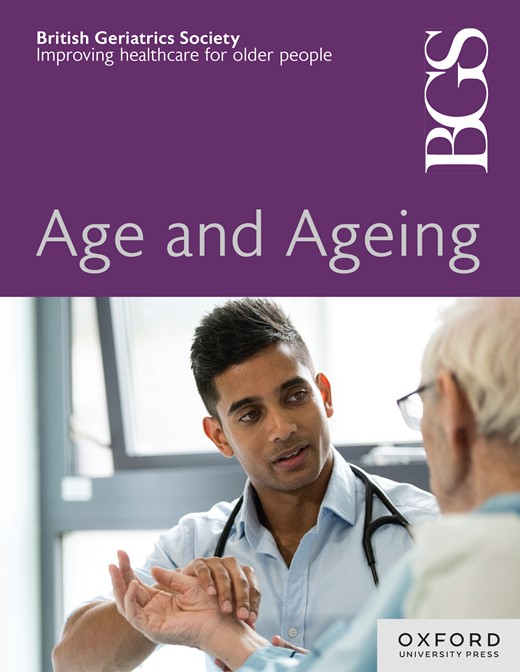Six-month outcomes of layperson-delivered, telephone-based behavioural activation and mindfulness interventions on loneliness among older adults during the COVID-19 pandemic: The HEAL-HOA Dual Randomised Controlled Trial
IF 7.1
2区 医学
Q1 GERIATRICS & GERONTOLOGY
引用次数: 0
Abstract
Background Loneliness among older adults during the COVID-19 pandemic constituted a global public health crisis. This study aimed to determine whether layperson- and telephone-delivered behavioural activation (Tele-BA) and mindfulness (Tele-MF) interventions, compared to telephone befriending/support calls (Tele-BF; attention control), could reduce loneliness among older adults who were living alone, socioeconomically deprived and digitally excluded. Methods As part of the ‘Helping Alleviate Loneliness in Hong Kong Older Adults’ dual randomised controlled trial (RCT), 1151 older adults (Mage = 76.6, SD = 7.8) were randomly assigned to Tele-BA, Tele-MF or Tele-BF. Assessments were conducted at baseline (T0), 4-week (T1), 3-month (T2) and 6-month post-intervention (T3). All interventions (eight 30-minute telephone sessions over four weeks) were delivered by 185 trained lay counsellors who were 50–70 years old and reported feeling lonely. Outcomes The primary outcome was loneliness (assessed with the UCLA Loneliness Scale [UCLA-LS] and De Jong Gierveld Loneliness Scale [DJGL]). Secondary outcomes were perceived social support, social network size, perceived stress, life satisfaction, psychological well-being, sleep quality and depressive and anxiety symptoms. The UCLA-LS scores were significantly reduced in Tele-BA at T2 and T3 and in Tele-MF at T2, compared to Tele-BF. No significant difference was observed between Tele-BA and Tele-BF from T1 through T3 in DJGL. The Tele-MF group showed significantly higher DJGL scores at T1 and T3 than the Tele-BF group. Significant positive effects of Tele-BA, compared to Tele-BF, were found in perceived social support, perceived stress, psychological well-being, depression and anxiety. Tele-MF did not significantly differ from Tele-BF on these secondary outcomes. Interpretation The trial demonstrates the effectiveness of telephone-based psychosocial interventions delivered by laypersons in reducing loneliness. It also underscores the potential for training peer lay counsellors to telephone-deliver scalable psychosocial interventions for older adults experiencing loneliness.2019冠状病毒病大流行期间,外行人提供的、基于电话的行为激活和正念干预对老年人孤独感的六个月结果:HEAL-HOA双随机对照试验
在2019冠状病毒病大流行期间,老年人的孤独感构成了一场全球公共卫生危机。本研究旨在确定外行人和电话传递的行为激活(Tele-BA)和正念(Tele-MF)干预是否与电话友谊/支持电话(Tele-BF;注意力控制)可以减少独居、社会经济贫困和被数字排斥的老年人的孤独感。方法“帮助缓解香港老年人的孤独感”双随机对照试验(RCT)将1151名老年人(Mage = 76.6, SD = 7.8)随机分配到Tele-BA、Tele-MF和Tele-BF组。在干预后基线(T0)、4周(T1)、3个月(T2)和6个月(T3)进行评估。所有干预(在四周内进行8次30分钟的电话会议)由185名受过训练的外行咨询师提供,这些咨询师年龄在50-70岁之间,报告感到孤独。主要指标为孤独感(采用UCLA孤独量表[UCLA- ls]和De Jong Gierveld孤独量表[DJGL]评估)。次要结局包括感知到的社会支持、社会网络规模、感知到的压力、生活满意度、心理健康、睡眠质量以及抑郁和焦虑症状。与Tele-BF相比,T2和T3时Tele-BA和T2时Tele-MF的UCLA-LS评分显著降低。DJGL患者T1 ~ T3期间,Tele-BA和Tele-BF无显著差异。在T1和T3时,Tele-MF组DJGL评分显著高于Tele-BF组。在社会支持感、压力感、心理幸福感、抑郁感和焦虑感方面,远端生活方式的积极作用显著高于远端生活方式。在这些次要结果上,Tele-MF与Tele-BF没有显著差异。该试验证明了由外行提供的基于电话的心理社会干预在减少孤独感方面的有效性。它还强调了培训同伴非专业咨询师的潜力,以便为经历孤独的老年人提供可扩展的心理社会干预。
本文章由计算机程序翻译,如有差异,请以英文原文为准。
求助全文
约1分钟内获得全文
求助全文
来源期刊

Age and ageing
医学-老年医学
CiteScore
9.20
自引率
6.00%
发文量
796
审稿时长
4-8 weeks
期刊介绍:
Age and Ageing is an international journal publishing refereed original articles and commissioned reviews on geriatric medicine and gerontology. Its range includes research on ageing and clinical, epidemiological, and psychological aspects of later life.
 求助内容:
求助内容: 应助结果提醒方式:
应助结果提醒方式:


